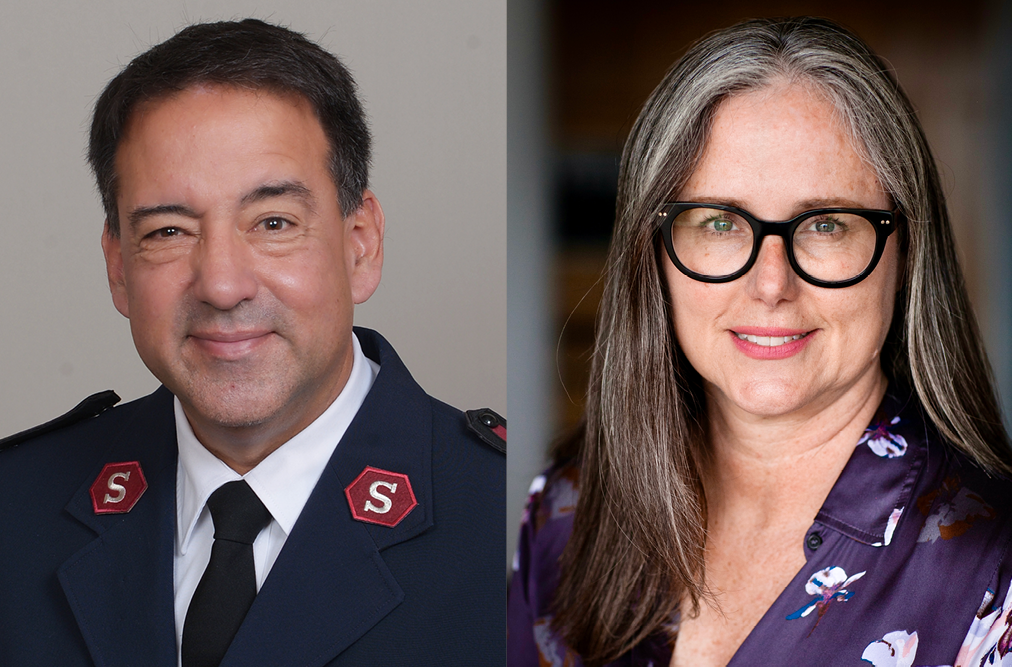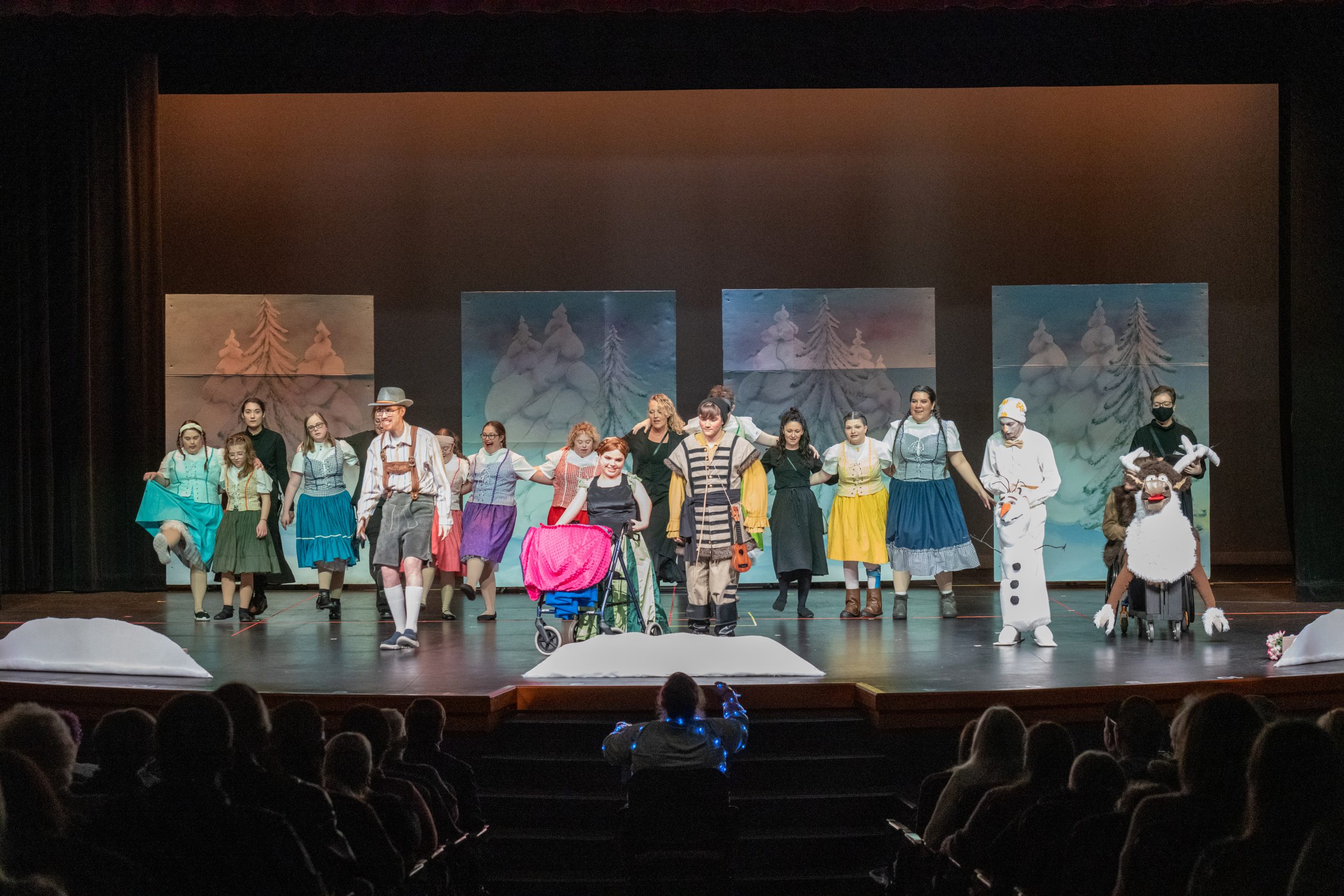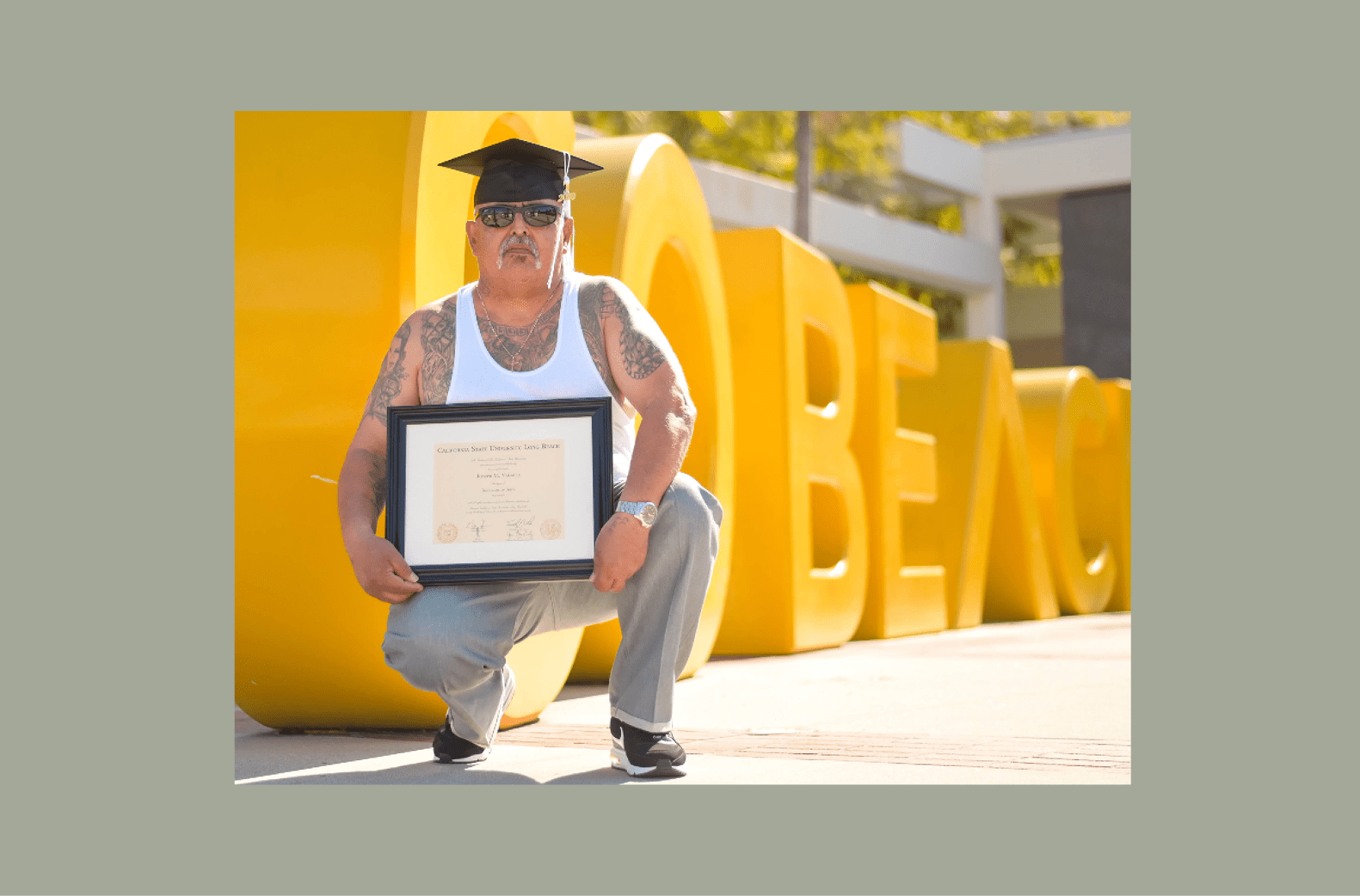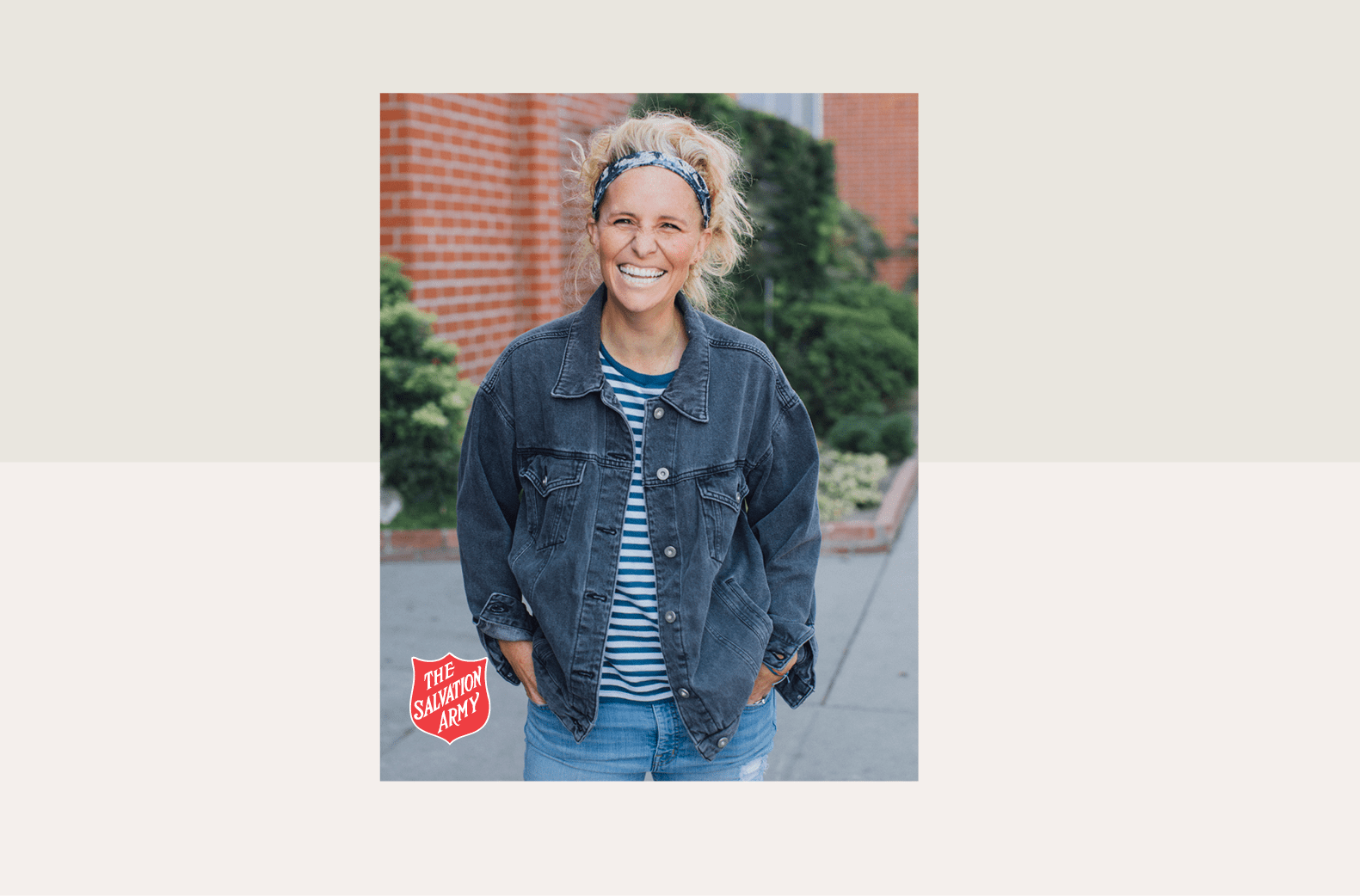You’ve no doubt seen a Salvation Army red kettle—maybe you’ve seen one already this Christmas season.
It is an iconic part of The Salvation Army and of Christmastime itself.
What started in 1891 with one creative Salvation Army officer or pastor wanting to provide a free Christmas dinner in San Francisco, has spread around the world.
Today, public contributions to the kettles in the U.S. enable The Salvation Army to assist more than 31 million people in need during the holiday season and throughout the year.
It’s a truly unique face-to-face touchpoint that gives us a chance to connect with our community and remind them The Salvation Army is at work in their neighborhood.
Major Ken Perine is the Administrator and Pastor for The Salvation Army in Spokane—with nine major programs from a church and community center with an afterschool program and league sports center, to three foster care programs, three shelters for families and adults experiencing homelessness, the largest food bank in Spokane County and a camp. The Salvation Army in Spokane impacts some 100,000 people a year.
And every year, the corps manages a kettle effort, putting out 68 kettles each Christmas and bringing in more than $430,000 in kettle donations.
Kathy Lovin is the Public Affairs and Communications Manager for The Salvation Army in the western U.S. And you may remember her from Episode 120 of this show where she shared six tips for tough conversations.
They’re both on the show today to share their own kettle experience and their take on why kettles are so critical to The Salvation Army.
Show highlights include:
- A quick history of the red kettle.
- Each guest’s experience with the kettle.
- How the red kettle represents the Army’s commitment to the community.
- How the kettle offers a chance of ministry.
- How it supports The Salvation Army’s connection with people all year.
- What goes into running kettles at a local corps level.
- The effect of the kettle effort for the community and throughout the year.
- What makes a good bell ringer.
- Favorite kettle stories over the years.
- Hopes for the red kettle Campaign and The Salvation Army this Christmas.
Listen and subscribe to the Do Gooders Podcast now. Below is a transcript of the episode, edited for readability. For more information on the people and ideas in the episode, see the links at the bottom of this post.
* * *
Christin Thieme: Major Perine and Kathy, welcome to the Do Gooders Podcast. Thank you both for joining us today.
Ken Perine: Well, thank you for the invitation.
Kathy Lovin: Yeah, I agree. Thank you.
Christin Thieme: Yes. And happy start of the Christmas season, I will say, as we kick off December here.
Ken Perine: Yes. It’s a little cooler up here in Spokane than down in Southern California, but it’s all good.
Christin Thieme: Yes.
Kathy Lovin: Yeah. We love Christmas. Merry Christmas.
Christin Thieme: That’s right.
Kathy Lovin: Happy kettle season.
Ken Perine: Yes.
Christin Thieme: Exactly. Well, we recently had an episode here on the podcast. It was episode 122, where we went through a Salvation Army 101, if you will, where we tried to cover, quickly, the who, the what, the where, why and how of the organization and how people can get involved in this Fight for Good.
So that is a great place to start for an overview of the work that’s happened since 1865, as The Salvation Army provides sustainable solutions for the most vulnerable. However, much of that work each year is supported by the infamous Salvation Army Red Kettle Campaign. So I’m wondering here at the start, if you can give us a little bit of a primer on the history of the red kettle?
Ken Perine: Sure. And it’s kind of interesting, the red kettle, we just assume it’s always been there, but as with everything it had its origin. And the origin of the red kettle really started in 1891 with a gentleman named Captain Joseph McFee and he was distraught. He was very sad. He wanted to feed all these people in San Francisco who were going hungry.
So during the holiday season, he wanted to provide this Christmas dinner for the destitute and he had one major hurdle to overcome and that was finding the funds to do it. And so he prayed about it, worried about it, and then finally he remembered his time in the Navy, actually, at Stage Landing where there was a large iron kettle called a Simpson pot that passerby would come in and toss coins into to help the poor.
And so the next day, Captain McFee placed a similar pot at the Oakland Ferry Landing at the foot of Market Street. And beside the pot, he placed a large sign that said, “Keep the pot boiling.” And he soon had all these people coming by at the ferry landing to provide funds to help people get fed at Christmas time.
Six years later, the kettle idea spread from the West Coast to the East Coast. And that year nationwide 150,000 Christmas dinners for the needy were created. What’s interesting is that by 1900 kettles were well established here in Spokane. What’s interesting here is that Captain McFee’s kettle idea launched a tradition that’s been around for, gosh, since 1891. And that these kettles are found throughout the world in Korea, Japan, Chile, and other European countries.
I just find it amazing that the Bible and gospel of Jesus motivates our lives and ministry for us as an Army. But the red kettle itself is that outward face of our ministries, as it allows the public really to partner with us as we rescue the perishing, renew the ability to thrive and restore healthy communities.
Christin Thieme: Yeah. And it’s really becomes synonymous with Christmas. It’s almost not the Christmas season without some sign of a kettle. Even in movies they show up.
Ken Perine: Right? No, it is interesting. Every time we see a kettle in a movie, my family’s always like, “Oh, look, dad, it’s a Christmas kettle.”
Kathy Lovin: It is really the one thing people seem to know about us. Recently, not too long ago, I was in a Trader Joe’s with a shirt on that had a shield and the guy goes, “Oh, I know you guys. I love the red kettles.” And this is a guy in his 20s. It’s the one thing people know. But the good thing about it is it’s not just something to know, it’s something to connect with.
It’s an outward sign that this is a community who cares about people who are struggling and that’s what the kettle symbolizes. And the idea that we would have kettles out in front of stores extends that sort of idea that not only does The Salvation Army care about people, that’s what these red kettles mean, but the store does too. This retailer does too. And the person who puts money in that kettle does too. It’s a great, like Major Perine said, it’s a way people partner with us, whether it’s the store or the donor.
Ken Perine: Right. Kathy, I just want to add onto what you said. The red kettle, I think, is that reminder to the community that there’s a working solution actually in operation that is reaching out and giving a hand up to the most vulnerable.
The community knows there are those that are suffering out there and they want to do something about it. And they want to make sure their money goes to the right place and to somebody that’s really going to make an impact. And that’s what the red kettle is. That’s why, it’s what you say, it’s part of Christmas. That part of Christmas is to realize that you’re buying gifts for your families and giving those things out. But how do you partner with somebody to make sure that those that are less fortunate actually also get a chance to experience Christmas and are able to be fed and clothed and housed?
And that’s where the red kettle comes into play is we are making an impact in other people’s lives. And as people donate to us, they too are making that same impact.
Christin Thieme: Yeah, absolutely. So you both have a lot of experience with the red kettle ministry of The Salvation Army, but you’re coming at it from different perspectives. So I’m wondering if you can each share a little bit about what is your experience with the kettle?
Kathy Lovin: I’ll let Major go first, because his experience is more hands on with the kettle.
Ken Perine: My first experience with the kettle was when I was 14, I was attending The Salvation Army Glendale, California, Corps. And the corps officer asked us to volunteer to stand at kettle. I had never done that before, and I grew up from a very upper middle class family and anything I wanted, we had.
But it was interesting when I was standing out there volunteering for my four-hour shift, how many people came up to me and said, “The Salvation Army saved my life.” Wow. What impact in a young man’s life. And I was proud to stand out there for my four-hour shift and, actually ever since then, I almost always have stood at a Salvation Army kettle for a few hours every year.
Eventually, I learned how to play a horn and stood out there playing my horn out there for many years. But it’s interesting now is that I start off as a volunteer and now I actually get to spend the money to impact other people’s lives.
Kathy Lovin: Yeah. My experience with the kettle is completely different because I’ve stood at the kettle a couple times, a number of times, maybe even, but I experienced the kettle from a marketing and public relations perspective. And I have to say for somebody whose work is around stories, how do we tell stories about the way The Salvation Army cares for people? The kettle is just a juggernaut. It is the connect point with so many people and The Salvation Army. And it’s crucial that we continue to appreciate what the kettle does. That really nothing else we do can replicate.
The kettle is an in-person embodiment of what we do and who we are. And there really isn’t anything else like it. And so from a marketing perspective, which is really what the Army pays me to give them, it’s just how do we make the most of what we have and how do we tell these stories? The kettle is just fantastic at that.
And if I could poll the CEOs of other nonprofits and ministry leaders, I’m going to guess that they would love to have something as iconic and as memorable as the kettle. The kettle is the thing that many people will say, “Gosh, I gave my first charitable gift next to a kettle when I was four years old.” Very few charities can say that.
And we have something that, honestly, it’s a gift and a blessing. And that’s my view of the kettle. That’s that’s my experience with the kettle is promoting it and getting it’s full potential.
Christin Thieme: Yeah. That’s that tangible reminder to everyone that we’re here and working and everything that goes on throughout the year, that we get to do every year, remind people once again, that we’re still here.
Kathy, you wrote one time, “The sight of a red kettle represents the Army’s commitment to that community.” Can you share a little bit more about that?
Kathy Lovin: I believe sincerely that the kettles are symbolic of a lot of things, but they certainly symbolize The Salvation Army’s commitment to help people who are struggling. And I think it extends to the retailers who say yes to the kettle because we say, every year we say, “Gosh, we have an opportunity to raise funds to care for people. Can we put a kettle in front of your store?”
We ask a lot of people and a great many of them still say yes. And it’s for a lot of reasons, they say yes, but principally because they care about people that live in their neighborhood, that live in their community, and they want to make sure they have what they need. And I do think that when retailers change their minds about the kettle, as some do, in fact about well four or five years ago, there was a major retail chain in the Southeast who said, “We’re not going to say yes to the kettles anymore. We just don’t think we can handle it anymore. We’re just not going to do it.” And the Facebook page for that retailer filled up with comments from store shoppers that said, “Wow, we thought you shared our values. We’re surprised to find that you don’t share our values.”
And I read each one of these Facebook comments and person after person said in essence, “Oh, we thought that you were like us and that you cared for people who are suffering.” And they were sad to find out that they didn’t. So not surprisingly, the retailer changed its course and welcomed the kettles.
Christin Thieme: Major, as a Salvation Army officer, or a pastor, beyond the kettle as a marketing and fundraising tool, how would you say that the kettle also offers a chance of ministry?
Ken Perine: Again, let’s go back to Christmas time. It’s a special time of year for families. It’s a time of fellowship, friendship and family. And as we unite over the celebration of the birth of Christ, our Lord and Savior, however, there are many people that don’t have that opportunity. And the kettle ministry allows us to provide something that’s unique to us, really unique to The Salvation Army, our kettle volunteers and workers bond through a common cause.
And when we talk to our kettle workers and volunteers prior to the season, and I give a little speech about why this is important. I just share stories of impact of how the kettle funds have been used to change people’s lives that year, which is pretty amazing. And so it provides that opportunity for the folks to bond together under common theme that they’re doing something tangible for others.
And so what that actually does, it helps to build that fellowship and friendship. And even that kind of family idea that they’re part of The Salvation Army family. It’s not just standing out there and ringing a bell for a couple hours or maybe for the whole season. It’s understanding that they’re actually making an impact in the lives of others by the work that they’re doing.
And again, that provides that common bond for them. And as we minister with these folks, we share ours and Christ’s love with them and also expose them to why our ministries actually exist in the first place. It’s really that we love the Lord and we want to see people move forward in life and that these funds are used to do both. And so kettles provides an opportunity for direct ministry to others, our kettle workers and volunteers, as well as the folks that we’re impacting. And that is really unique to The Salvation Army.
Christin Thieme: Yeah, absolutely. It’s that in-person touchpoint for sure. And it’s for a month, let’s say at Christmas time, but Kathy, how would you say it, or does it, help to support how The Salvation Army tries to connect with people throughout the year, beyond Christmas?
Kathy Lovin: Yeah, I think that’s important too. In fact it was Major Perine that said this one time on a call, my boss, Deb, and I call Major Perine and Major Gwyn Jones, the Kettle Kings, because they just seem to have all the sort of institutional wisdom about kettles. And so we go to them a lot and ask them, “How do we make this better? How do we focus on this? And how do we raise awareness?”
And one of the things that Major Perine said is that in person impact of the kettle during Christmas specifically, but of course all year, because it doesn’t stop there, is the touch point that supports everything else.
If we believe the marketing wisdom that it takes seven times for us to see a marketing message before we act on it, it’s called the Rule of Seven, then the kettles provide that face-to-face and in-person experience, which bolsters everything else.
So you see kettles, hopefully, multiple times during the Christmas season, then that raises, and this is again, Major Perine’s the one that made this point. So I’m just sort of using his wisdom here. It’s the thing that supports that direct mail piece that you got in the mailbox. “Oh yeah. I saw them on the street today in front of the grocery store.” It supports that ask you might see when you open your browser and you see a display ad or the email you get or the event invitation you get. “Oh, my friend invited me to sit at their table at the Army’s annual dinner.”
It’s the thing that reminds folks all year round who the Army is and what we do. And it’s the, well, it’s not the only face-to-face, but it’s one of the only face-to-face and in-person opportunities we have with the general public that bolsters everything else.
That’s why I think kettles are so important because they raise money, certainly. But because of all the other stuff that they bolster throughout the year and at Christmas time. That’s really why I think it’s important that we can continue to press on. I know it’s a lot of work. Kettles are a lot of work, but this is really what the magic, I think, is.
Magic isn’t a real theological word, but I think, you know what I mean here? It’s sort of that layer of support that really pushes everything else up.
Christin Thieme: Yeah, absolutely. You mentioned it’s a lot of work. I think everyone, obviously, has seen a kettle outside of a store, seen them in movies with somebody standing next to it, ringing a bell, people walking by, dropping in change. Major, can you give us a little bit of a picture of what actually goes into running a kettle program at a local corps, church level? Can you walk us through that process?
Ken Perine: Sure. Kettles, for us, starts in January of that year. It starts with a debriefing of our actual kettle and Christmas efforts. We talk about, we take notes on, we discuss what went well, what could be improved. That’s where we really start the brainstorming of new ideas for next year. And I always tell people that you can throw out any idea you want and we’ll just write it down. And we’ll rediscuss in August, unless it needs work earlier. So that’s where that really starts.
And then we have a few other meetings prior to August, but the big meetings we started having with all our staff happen in August and that’s where we go over our notes from January and then we start, we set the calendar for two weeks, every two weeks until the second week of the kettles, we’re having these kettle meetings and we’re going to discuss our Thanksgiving meal, our Christmas Adopt-a-Family, our Angel Tree programs.
We discuss all the impact programs that are going to take—our Shop With a Cop or Clothe a Child—all the different events that are going to take place during that season during that time. But we also talk about how we’re going to inventory supplies. We discuss some plan for the creation of new materials, our media plan.
We look at, again, this is all starts in August, our advertising plans and how these plans fit with our mail appeal, mailings, our national advertisement, our national messaging. And the whole idea is to have one consistent and constant message to the public during the whole season. So it does just what Kathy said, our goal is that we want multiple touchpoints for folks to really get a chance to partner with us, to see an impact in other people’s lives. So that’s the purpose behind all that.
So it takes a lot of effort. And then during that time, we also meet with our store managers. And what we do with the store managers too is in every January, all the stores, we make these posters and we have our kettle workers and the folks that come through for Christmas and for Thanksgiving dinner and all the other events we’re doing, and the kids, we have, them all sign the thank you posters that we’re going to deliver all those store managers in January.
And so that allows us when we have these meetings with the store managers in September, sometimes they still have the poster up from the previous year. And really the poster doesn’t cost that much, but really it’s just one way that we can thank them for allowing us to partner with them to raise these funds for folks.
So it is a very big job. We have a big team that works on it, but even at a small corps it’s really the same effort. Maybe you can only do 10 or 20 kettles. We actually put out 68 kettles every year and we run three shifts. And so it’s a large operation for the kettle side, but we consider that as part of our overall program to share our message with the community of the impact we’re making in people’s lives and giving them opportunity to partner with us in their donations.
Christin Thieme: Well, and on that note, where does that money go? I mean the money that you raised, you’re located specifically in Spokane, can you give us a little bit of a picture of what The Salvation Army is and does there in Spokane?
Ken Perine: Yeah. So The Salvation Army Spokane is a very large operation, but those funds are used to fund our Christmas programs, which are the, again, Adopt-a-Family, Toy and Joy, our Shop With a Cop, Clothe a Child programs, our Thanksgiving meal. And then the leftover money is really used throughout the rest of the year for those special event type stuff to help folks. And it’s just a pretty amazing impact that those dollars have, and the overall budget for us, but truly the impact it’s having in people’s lives, changing their lives around.
Christin Thieme: Absolutely. Kathy, what does make a good bell ringer? We’ve talked about the kettle, but there’s always somebody standing next to it. Can you tell us a little bit more about that person?
Kathy Lovin: You bet. I think the person standing next to the kettle is very important, very important. And I think it’s not too complicated, honestly, to identify what makes a good bell ringer. Because a good bell ringer, I think, is somebody who is willing to engage and interact. Standing next to the kettle, making eye contact with people as they go by, engaging them with a, “Hey, good morning,” or “Merry Christmas,” whether they give or not. We’re not asking them to say, “Hey, come on over here and put some money in this kettle.” We’re not asking them to do anything like that except to say, “Hey, good morning. Hi. Thanks for your gift.”
Anything that they can say that’s friendly, engaging. I think it’s good that they’re not distracted by their mobile phone or maybe they bring a friend for moral support, that stuff is distracting. And if you’re not making eye contact with people as they go by, then you’re not giving them the full experience of the kettle.
So I’m really a fan of somebody who’s standing next to the kettle, ringing the bell, and is friendly. And I’ll tell you, years ago, this is not something you have to really learn—I think people are going to interact with the bell ringer who wants to interact with them.
So years ago, here’s the story, my niece, who was maybe 10 at the time or something, and it was Christmas time and we were in Palm Desert, California, visiting my dad. And we were at a smaller mall. It was big enough to have two bell ringers that we could see, but it was an outdoor mall. And I said, “Oh look, bell ringers. I brought some money for us to put in.” And she said, “Oh, good. Oh, but let’s not stop at that bell ringer because he’s sitting down and he’s looking at his phone.”
So she knew that it was going to be more fun to go to the other bell ringer who was standing next to the kettle and greeting people as they went by. She wanted to be greeted. She wanted to support the bell ringer who was enjoying what they were doing and engaged in it.
That really is kind of the lesson: If you stand next to the kettle, greet people as they go by. You don’t have to have an instrument to play music. In fact, if you’re playing music, you’re probably not making eye contact with people. So it’s pretty simple formula. Look at people when they go by, smile at them, tell them, “Merry Christmas! Have a great day.” And thank them when they give.
Christin Thieme: Yeah. A little of that Christmas spirit.
Kathy Lovin: Yeah.
Christin Thieme: I like it.
Kathy Lovin: Maybe Major wants to improve on my definition of that? But that’s what I think works.
Ken Perine: I really can’t improve too much on that. I would just say, I think, for me, I always want to make sure the people that are ringing the bell understand the greater impact that they’re having and the greater connection. That they’re not just standing out there for themselves. They’re standing out there and in place of someone else, so that we can raise the funds that we need in order to serve the people that we do. So for me, a good bell ringer understands why they’re there and is committed to what we’re doing.
Christin Thieme: What would you each say your hope for this Red Kettle Campaign for this Christmas season is for The Salvation Army and for those we serve?
Ken Perine: Well, for me, I say this year, the economy the way it is, and even in talking to our employees and church members and even just people in the community, it’s pretty incredible, the impact inflation’s had in our society. And I’m really praying and hoping that our kettle season this year will do well because a lot of people’s funds have been really diminished.
So we’re hoping that people will continue to partner with us this Christmas season. And because there are people out there counting on the funds raised at the red kettle to be available to those that are suffering this year. And even more this year, people need help.
So my hope for this Christmas season is that more and more corps put out more kettles and continue on the tradition of the Red Kettle Campaign, because it does have an impact in people’s lives.
Kathy Lovin: Yeah, I would agree with all that, of course. And I think that my fondest wish for kettle season this year is that we would embrace the kettles and understand that they’re an opportunity to be face-to-face with people in our community. We’re a face-to-face organization. Ministry is a face-to-face thing. And after two years of not seeing very many people’s faces, I just hope and pray that we embrace kettle season as an opportunity to see people again and engage with people again and make the most of this wonderful opportunity.
I think kettles really are a gift and a blessing. And not to get negative here, but if we don’t embrace them and do as much as we can with them now, we won’t get that opportunity back. There won’t be something coming in to replace kettles. Kettles are an iconic part of The Salvation Army’s history and an iconic part of a lot of people’s Christmas tradition. So I think we need to embrace them and do as much as we can to put kettles in front of every store that will have us.
Ken Perine: Absolutely. And I think part of that, I think, again, I always talk about impact, impact, impact, impact. The funds that are raised there are really…They go toward a Christmas effort and this past year in our foster care program, we had a young child that came in. She was, I think she was five, and she came in the night before, on Christmas Eve, because her parents had done some bad things and she was taken away from her parents.
She was just a filthy mess and it took two baths to get her clean. And so the next morning she didn’t think…She’d never had Christmas before. So that kid that next morning had a bunch of presents just for her. That’s the impact. That’s red kettles for you right there.
Kathy Lovin: I love it.
Christin Thieme: Yeah. Well thank you both for sharing. Thank you for the work that you do to make sure that these kettles continue. And Merry Christmas to you.
Ken Perine: Merry Christmas.
Kathy Lovin: Yeah. Merry Christmas to you both.
Additional resources:
- Listen to the Do Gooders Podcast Episode 122 Welcome to The Salvation Army 101 for more on who The Salvation Army is and how we give the world a lasting display of the love behind our beliefs.
- Listen to the Do Gooders Podcast Episode 120 Six tips for tough talk with Kathy Lovin for advice on how to be a more effective, purposeful communicator.
- Get on the list now for The Light Will Come: A 28-Day Advent Journey for Families and prepare a simple, meaningful celebration with your family.
Listen and subscribe to the Do Gooders Podcast now.

















